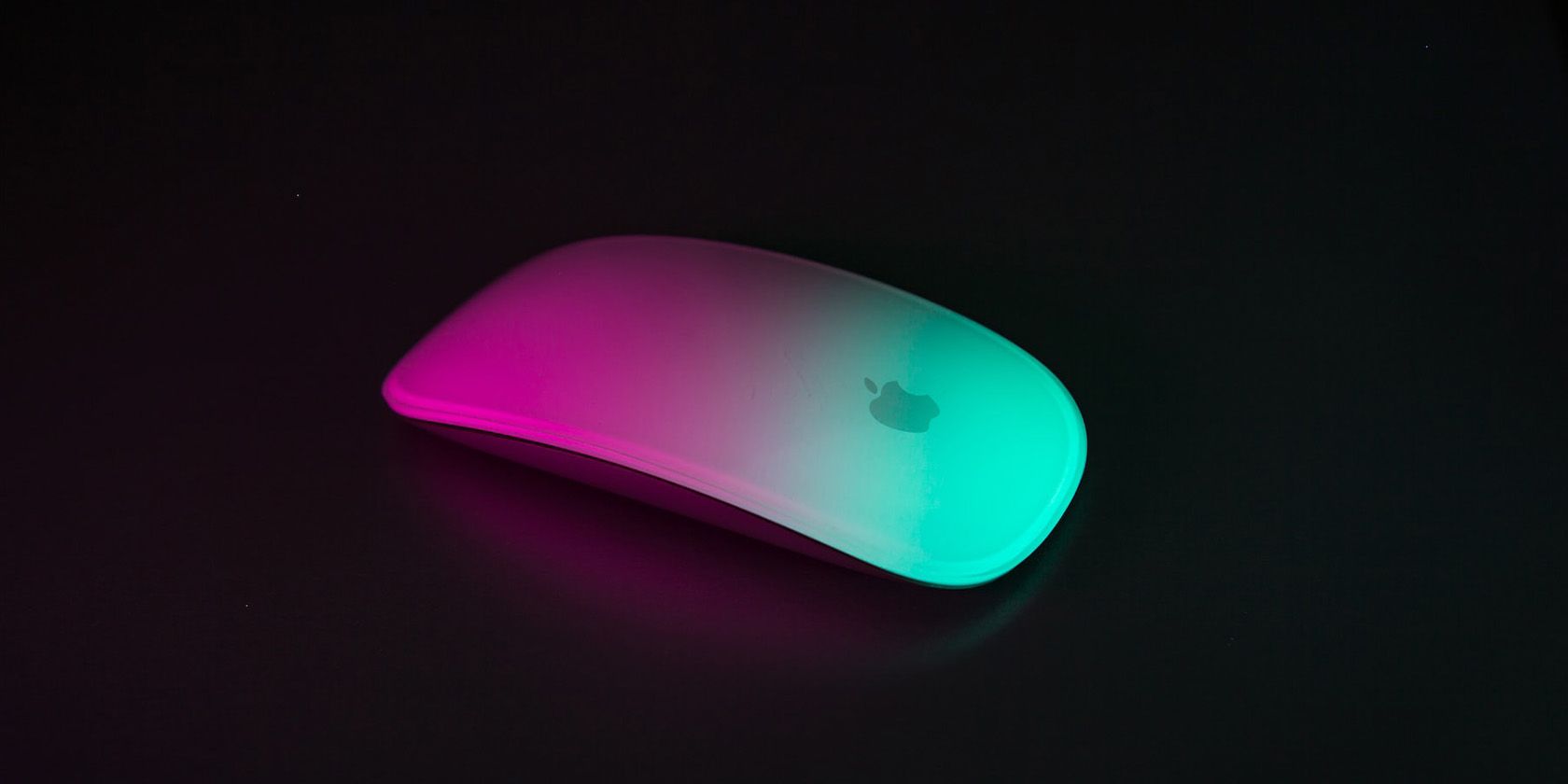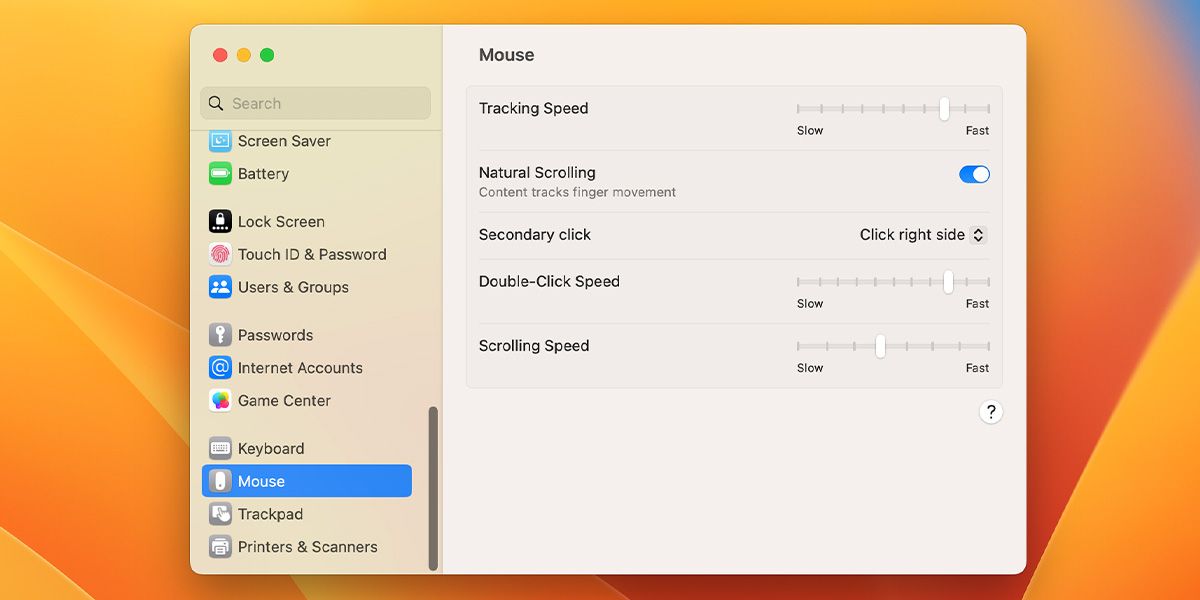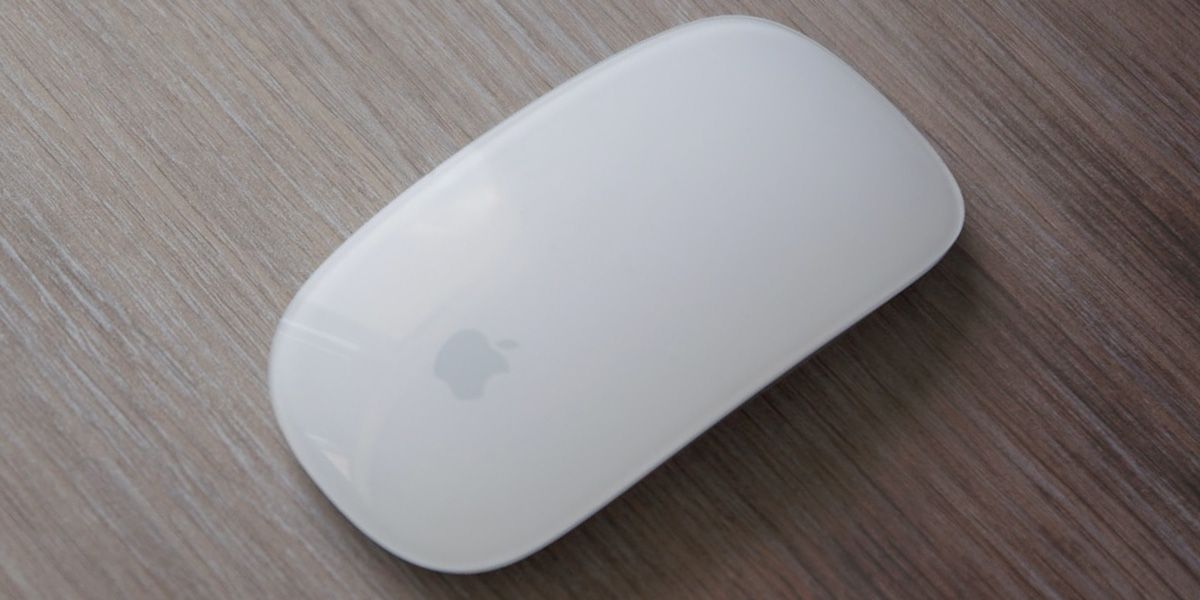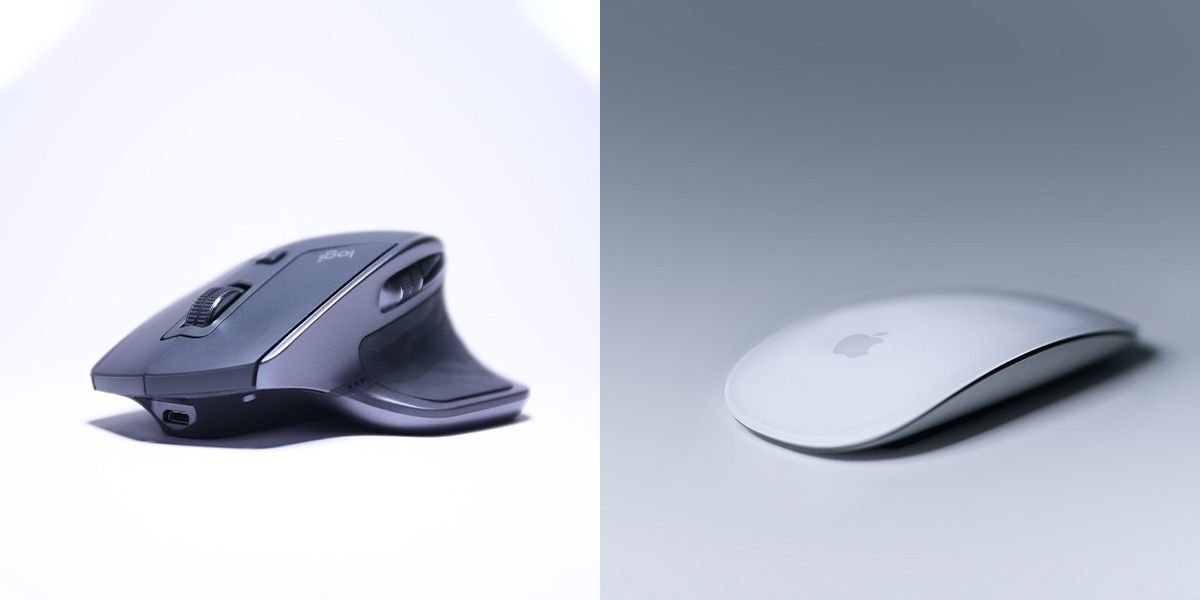A good number of users who own a Mac also happen to own the Magic Mouse. It is a reliable mouse with excellent support for multitouch gestures and impressive battery life. However, there are a lot of third-party alternatives out there.
While Apple's Magic Mouse is a great accessory, the other more affordable options are also quite interesting. We'll be discussing some of the good and bad aspects of the Magic Mouse, so you can figure out how it compares with the competition.
The Pros of Buying Apple's Magic Mouse
There are obvious benefits you get from using Apple's Magic Mouse. For example, it's lightweight and portable, features excellent battery life, and supports handy mouse gestures.
1. Gestures
Many people love and use Apple's Magic Trackpad because of its excellent gestures. Fortunately, even the Magic Mouse has support for most of these. You can activate these gestures by navigating to Apple Menu > System Settings > Mouse.
From here, you can turn on features such as Smart Zoom and enable or disable the gestures.
Smart Zoom lets you quickly zoom in or out of windows by double tapping the mouse surface with one finger. Double tapping with two fingers will bring up Mission Control. This allows you to switch between apps quickly. You can also swipe left or right with one finger to move between the previous or next web pages within a browser.
Finally, you can move between full-screen apps by swiping left or right with two fingers on the mouse's surface. Once you get used to all of these gestures, it's a bit hard to go back to regular mice.
2. Lightweight and Portable
Another benefit of the Magic Mouse is its portability. It only weighs 99g, which is quite light for a wireless mouse. If you want to carry it around in a backpack, you'll likely never notice it's there because of how thin it is. While the mouse is lightweight, it does not feel flimsy. Sure, there are lighter mice out there, but very few are built as well as the Magic Mouse.
The weight distribution feels great here as well. On top of that, it features a rechargeable battery. This means you don't need to carry around a pair of AAA or AA batteries. Considering it is a mouse that is reliable and built well, you can chuck it into a backpack without thinking too much about it.
The best part is that you don't need to worry too much about battery life while carrying it around because a fully charged Magic Mouse can last several weeks. And you can get roughly 9 hours of usage time with a quick two-minute charge.
3. Apple's Design and Branding
While you can use the Magic Mouse with a Windows Machine, it was designed with Macs in mind. This is quite obvious, considering it's bundled with most desktop Macs. Because of that, the Magic Mouse features a sleek and stylish design that looks right at home next to your iMac, MacBook, or Mac Pro.
The mouse features a sleek glossy finish at the top, giving it that premium look and feel. You can also buy a black version of this mouse if that's more your style. That version is included with the Mac Pro in the box.
Finally, the Magic Mouse also works surprisingly well if you own an iPad. You can use mouse gestures on an iPad, just like you would on a Mac. Apple even added some exclusive gestures that work with the Magic Mouse on an iPad. So, the Apple ecosystem earns another win here for the Magic Mouse.
4. Precise and Accurate
While the magic mouse gets a lot of flack for multiple reasons, you can't argue that it does not work well. On top of having excellent build quality and a lightweight design, it features an excellent wireless sensor. As such, you can expect precise and accurate tracking and response.
Since the design is ambidextrous, it works well for both right and left-handed users. It automatically pairs with Macs via Bluetooth, and the connection is rock-solid. The mouse also glides easily on any surface, thanks to the low-friction mouse feet at the bottom.
While it lacks a scroll wheel, the scrolling gestures work well, and some could argue that the experience is better. Considering all of this, the precision and accuracy of the Magic Mouse contribute to why people use it every day.
The Cons of Buying Apple's Magic Mouse
So, the Magic Mouse is an excellent device, especially if you get one with the purchase of an iMac or Mac Pro. However, there are some obvious downsides because of the unorthodox design. So, here are some of the drawbacks of the Magic Mouse:
1. It's Expensive
As we mentioned earlier, the Magic Mouse is great if it comes with your desktop Mac. However, if you go out to buy one, it costs $99. That's where this mouse doesn't make much sense and may seem like actually burning money. The features and battery life are great, but it's hard to argue that those aspects make it worth the price.
If you're willing to spend that much on a wireless mouse, look at Logitech's MX Master Mouse. The Master 3S is the latest and greatest version, and it features a physical scroll wheel, side buttons, and an ergonomic design that is much more comfortable than the Magic Mouse.
It's a larger mouse, but you'll appreciate its size and shape for long productivity-focused sessions. The Magic Mouse is great, but it's definitely quite a bit overpriced.
2. Poor Ergonomics
So, the Magic Mouse is certainly sleek and stylish. It stands out from the crowd because of its unorthodox design. Unfortunately, that unorthodox design also makes it uncomfortable if you intend to use it for longer sessions. There's no thumb rest to speak of, and your fingers rest awkwardly on the surface.
This is certainly disappointing, considering other compact mice out there still manage to be comfortable. For example, the Logitech MX Anywhere 3 and Microsoft Modern Mobile Mouse are much better mice for everyday use. This is simply because they are more ergonomic and comfortable than the magic mouse.
If you spend a lot of time at your desk, you'll quickly realize that the Magic Mouse feels cramped and uncomfortable, which is a bummer if you consider the fact that the current version of the Magic Mouse is an iteration of the original. Apple had the chance to improve its ergonomics, but the company simply ignored that aspect entirely.
3. No Extra Buttons
Side buttons are quite common these days with many traditional mice. If you've never used a mouse with side buttons, this might not be a big deal. However, if you have used one, you know how hard it is to go back.
You can quickly switch between web pages by clicking the side buttons on a mouse. Sure, the gestures on the Magic Mouse imitate this, but pressing a button right above your thumb will always be quicker. On top of that, you can also reprogram these side buttons for different applications.
A lot of people also use side buttons when playing games. This is something people look out for when buying a gaming mouse. If you intend to play a few casual games on your Mac, you'll quickly discover that the Magic Mouse is not a good fit for that purpose.
4. Poorly Placed Charging Port
This might be one of Apple's most confusing and impractical design decisions. Nearly every wireless mouse on the market either uses AAA or AA batteries or features a charging port at the front of the mouse. For some odd reason, Apple's Magic Mouse has a charging port at the bottom of the mouse.
For starters, this means you will have to flip the mouse upside down to charge it, which just looks incredibly strange. More importantly, this means that you can't use the mouse while it's charging.
And although the mouse features lengthy battery life and even charges quite quickly, every time you plug it in for charging, you'll always stop and wonder why Apple went through with this design.
The Magic Mouse Isn't for Everyone
In conclusion, there are a lot of benefits to using the Magic Mouse. However, considering how the design choices translate to an uncomfortable experience, it is a bit hard to recommend. If you got one for free, then it is quite decent. However, if you want to go out and buy one, we'd say it is pretty overpriced for what it is.
The case for the Magic Mouse becomes even weaker when you take a look at some of the third-party alternatives. A lot of manufacturers, such as Satechi and Logitech, create excellent third-party accessories for Macs, and mice are no exception.





